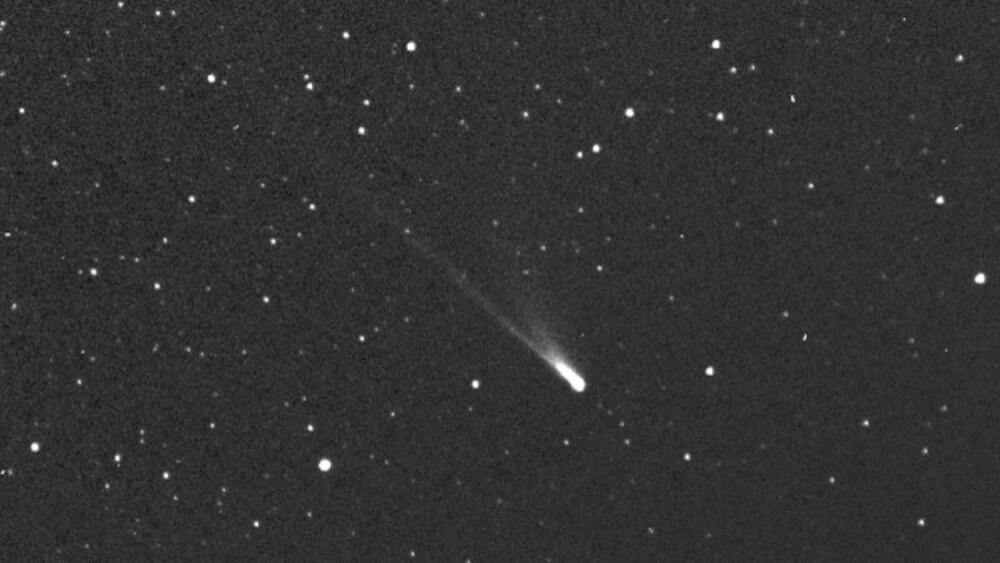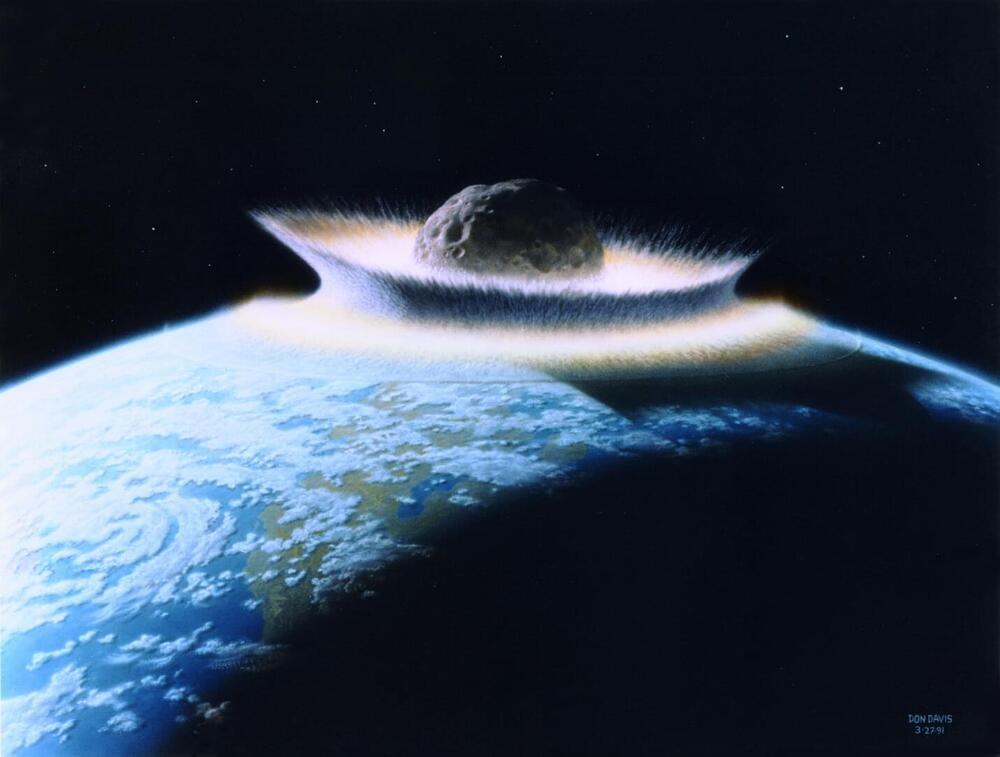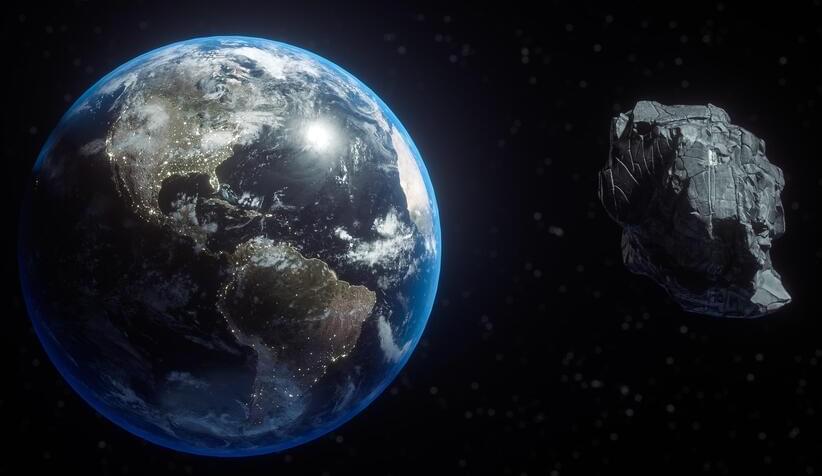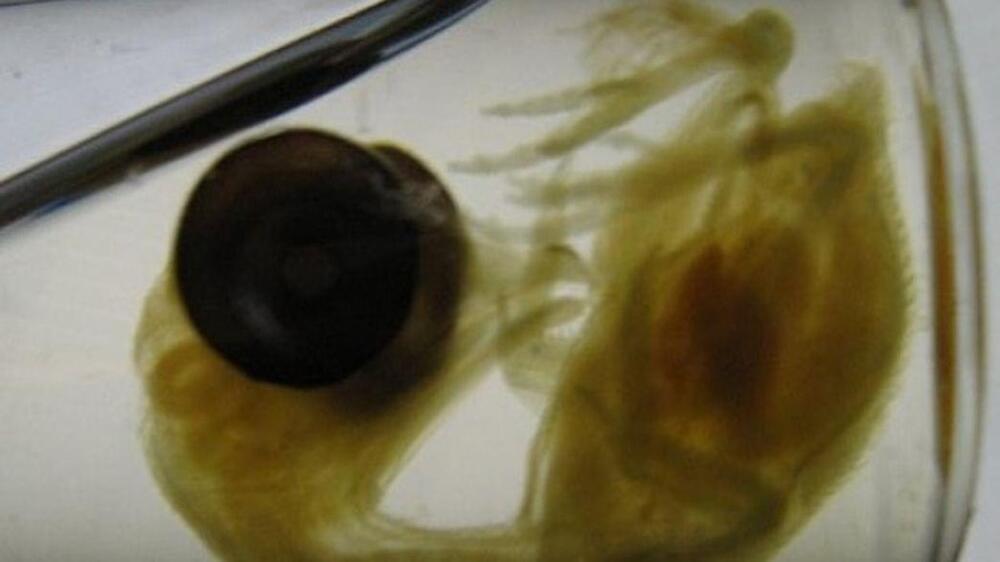“I think it’s going to be inconclusive, if not impossible to demonstrate conclusively,” one physicist said of the possible interstellar comet.



For the first time, researchers have recorded live and in atomic detail what happens to the material in an asteroid impact. The team of Falko Langenhorst from the University of Jena and Hanns-Peter Liermann from DESY simulated an asteroid impact with the mineral quartz in the lab and pursued it in slow motion in a diamond anvil cell, while monitoring it with DESY’s X-ray source PETRA III.
The observation reveals an intermediate state in quartz that solves a decades-old mystery about the formation of characteristic lamellae in material hit by an asteroid. Quartz is ubiquitous on the Earth’s surface, and is, for example, the major constituent of sand. The analysis helps to better understand traces of past impacts, and may also have significance for entirely different materials. The researchers present their findings in Nature Communications.
Asteroid impacts are catastrophic events that create huge craters and sometimes melt parts of Earth’s bedrock. “Nevertheless, craters are often difficult to detect on Earth, because erosion, weathering and plate tectonics cause them to disappear over millions of years,” Langenhorst explains.

Researchers have found that some asteroids that are largely made from small pieces of rubble could be very difficult to deflect if one were to ever hurtle towards Earth, a terrifying finding that could force us to reconsider our asteroid defense strategies.
It’s an especially pertinent topic considering NASA’s recent successful deflection of asteroid Didymos by smashing its Double Asteroid Reduction Test (DART) spacecraft into it last year, a proof of concept mission meant to investigate ways for humanity to protect itself from asteroid threats.

An astronomer has captured “extraordinary” footage of an asteroid that made an “extremely close” approach to the Earth on Thursday.
The space rock, known as 2023 BU, zoomed over the southern tip of South America yesterday, while it was only around 2,200 miles above the surface of the Earth.
This is one of the closest approaches of an near-Earth object ever recorded. Data from NASA’s Center for Near Earth Object Studies showed that the flyby of 2023 BU was the fourth-nearest of more than 35,000 past and future Earth close approaches in the 300-year period from 1900 to 2200.
When Japan’s Hayabusa mission traveled to asteroid Itokawa, it collected samples. These successfully reached Earth in 2010.
Near Earth asteroid Itokawa is a rubble pile that formed more than four billion years ago, a new study found. So, these asteroids might be resilient to demise.
Destroying an Earth-killing asteroid is not always possible, here’s what we can do instead.
Do you know what size asteroid would be enough to end all life on Earth? According to the experts at NASA, a space rock only 96 km wide can do the job.
In 2005, for the first time, a Japanese space capsule Hayabusa brought the dust particles of an asteroid named Itokawa to Earth.
© Kevin M. Gill.
So, to keep our planet safe, it is critical to investigate various types of space rocks and devise counter-strategies in the event any of these are on a collision course with Earth. However, to study space rocks or asteroids, scientists need samples.

Sixty-six million years ago, the age of the dinosaurs came to a dramatic close as a huge asteroid impact accelerated them on a path towards extinction. Not all of them died out, however; those that survived went on to become today’s birds.
Scientists are still trying to carefully map out the anatomical changes that occurred between dinosaurs and birds during this time, and there’s arguably no better way to do this than to engage in a little “reverse evolution.” With this in mind, a team of researchers has grown “dinosaur legs” in chicken embryos, as revealed in their study in the journal Evolution.
Remarkably, previous research manipulating chickens into “becoming” dinosaurs has already taken place. Back in 2015, a study showcased that chickens that had been tweaked during embryonic development could grow a dinosaur-like snout. A year earlier, a more low-tech study demonstrated how a few strategically-placed weights could make a chicken walk along like a Tyrannosaurus rex.
The NEO Surveyor will be able to detect individual asteroid heat signatures.
NEO Surveyor is, as the name implies, a satellite specifically designed to survey objects near the Earth (NEO). One of its primary contributions will be to look for asteroids and other small bodies that are potentially on an eventual collision course with Earth but are invisible to typical NEO survey missions because of their location in the solar system.
Typically, their signals are just background noise against the overwhelming signal from the Sun. But NEO Surveyor will be able to detect individual asteroid heat signatures, allowing it to isolate potentially dangerous asteroids using this novel technique. With the increased focus on “planetary defense,” as it has come to be called, NASA has been interested in the mission, which was initially proposed in 2005, for some time.
But, as with all bureaucracies, NASA has budgetary difficulties, and NEO Surveyor was no exception. The agency initially canceled NEO Surveyor’s budget for the fiscal years 2022 and 2023, forcing project scientists and engineers to move on to other projects for their salaries. So when NASA again picked up the bill for the project, it ballooned to $1.2 billion, partly due to the increased inflation throughout the economy in the intervening years.
Forged 66 million years ago, an enormous impact crater near Chixculub, Mexico, was left undiscovered until only a few short decades ago. But what caused it?
Millions of years ago, a dramatic mass extinction wiped out the dinosaurs.
Marking the transition between the Mesozoic and Cenozoic eras (which we are still in), it was one of the most significant events in Earth’s history. The cause? Perhaps a giant asteroid hit Chixculub near modern-day Yucatan, Mexico.
Sixty-six million years ago, something from the very edge of our solar system completed its unlikely journey into the inner planets.
Aunt_Spray/iStock.

The event is likened to the Chicxulub collision on Earth.
A study has found that the megatsunami that swept Mars around 3.4 billion years ago was caused by an asteroid strike on one of its oceans. The event is compared to the likes of the Chicxulub collision—which is believed to have wiped out dinosaurs from the face of the earth about 66 million years ago.
Researchers, led by Alexis Rodriguez of the Planetary Science Institute in Arizona, have also suggested that NASA’s Viking 1 Lander, which was deployed on a mission to find evidence of life on Mars in 1976, could have landed near the crater of this megatsunami.
Michalz86/iStock shannonstent/iStock Dominic Jeanmaire/iStock.
The new study published in the journal Scientific Reports analyzed “maps of Mars’ surface, created by combining images from previous missions to the planet, and identified an impact crater that could have caused the megatsunami,” as mentioned in the press release.